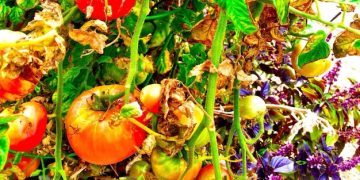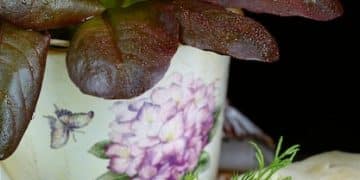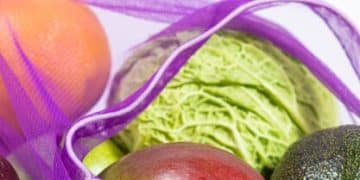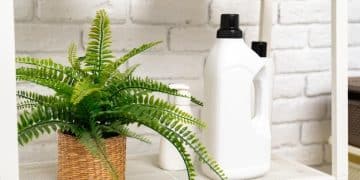Backyard Composting: Reduce Waste by 30% with This Beginner’s Guide
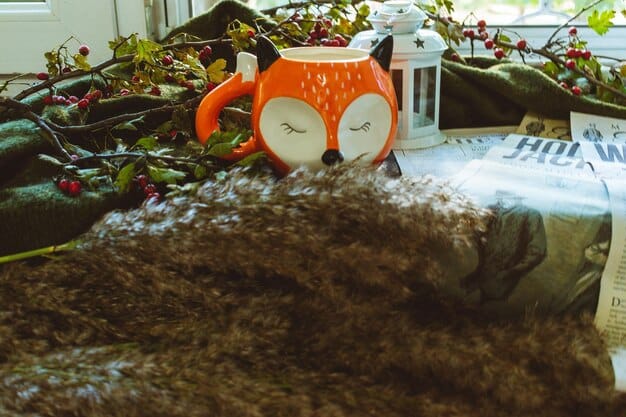
Reduce waste by 30% this year by learning the basics of backyard composting; this beginner’s guide offers simple steps, essential tips, and everything you need to start making nutrient-rich compost in your own backyard, contributing to a greener lifestyle and healthier garden.
Ready to reduce waste by 30% and enrich your garden soil? Backyard composting is an easy and effective way to achieve both! Let’s dive into the world of composting, step by step, making it simple for anyone to get started.
Why Compost? Reducing Waste and Benefiting Your Garden
Composting isn’t just about discarding less trash; it’s a powerful tool for environmental stewardship and garden health. Understanding the benefits can inspire you to start your own composting journey.
Let’s explore how composting can significantly impact both your waste management and your garden’s well-being.
The Environmental Impact of Composting
Composting helps divert organic waste from landfills, where it decomposes anaerobically, producing methane, a potent greenhouse gas. By composting at home, you’re actively reducing your carbon footprint.
- Divert waste from landfills and incineration plants, lowering methane emissions.
- Lessen the need for chemical fertilizers, which are energy-intensive to produce.
- Decrease reliance on plastic garbage bags, reducing plastic pollution.
- Promote a sustainable lifestyle by utilizing natural resources efficiently.
Benefits for Your Garden
Compost is a fantastic soil amendment, enriching it with nutrients and improving its structure. It acts as a natural fertilizer, promoting healthier plant growth without the use of synthetic chemicals.
- Improves soil structure, making it easier for roots to grow.
- Enhances water retention, reducing the need for frequent watering.
- Provides essential nutrients to plants, promoting vigorous growth and higher yields.
- Suppresses plant diseases and pests, leading to a healthier garden ecosystem.
Embracing composting is a simple yet profound way to contribute to a healthier planet while simultaneously nurturing a thriving garden. It’s a win-win for you and the environment.
Choosing the Right Composting Method for Your Backyard
There are several ways to compost at home, each with its own set of advantages and considerations. Selecting the right method depends on your space, time commitment, and personal preferences.
Let’s compare different composting methods to help you determine the best fit for your backyard.
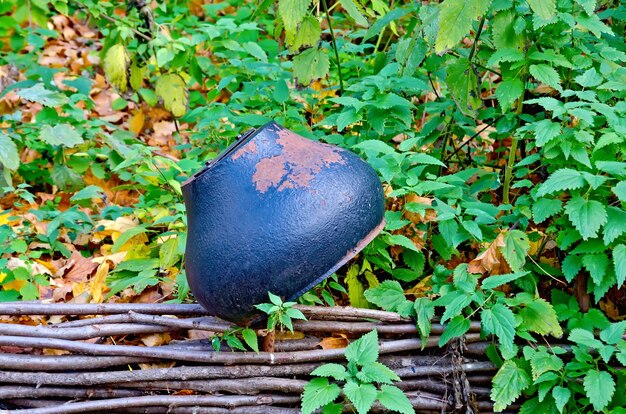
Compost Bins
Compost bins are enclosed structures that provide insulation and help retain moisture, accelerating the decomposition process. They are ideal for those who want a more controlled and contained composting solution.
Typically made of plastic or wood, these bins come in various sizes and designs.
Compost Tumblers
Compost tumblers are rotating containers that make turning the compost easy and efficient. This aeration speeds up decomposition and reduces the physical effort required.
- Easy to turn, speeding up the composting process.
- Enclosed design keeps pests out and contains odors.
- Ideal for small to medium-sized yards.
Open Piles
Open piles are the simplest and most traditional composting method. They require no special equipment and are suitable for handling large volumes of yard waste. However, they may attract pests and produce odors if not managed properly.
- Low-cost and easy to set up.
- Suitable for large amounts of yard waste.
- Requires regular turning to maintain proper aeration.
Selecting the right composting method depends on your specific needs and preferences. Consider the space available, the amount of waste you generate, and the level of maintenance you are willing to undertake to decide which method suits you best.
Setting Up Your Compost System: Location and Materials
Once you’ve chosen a composting method, it’s time to set up your system. Proper location and the right mix of materials are crucial for successful composting.
Let’s look at the essentials for setting up your compost system for optimal results.
Choosing the Right Location
The location of your compost system should be convenient, accessible, and conducive to decomposition. A spot that receives partial sunlight and is near a water source is ideal.
Avoid areas that are prone to flooding or are too close to your house, as composting can sometimes produce odors.
Essential Composting Materials
Composting requires a balanced mix of “green” and “brown” materials. Green materials are nitrogen-rich and include fresh plant matter, while brown materials are carbon-rich and include dry leaves and twigs.
- Green Materials: Vegetable scraps, fruit peels, coffee grounds, grass clippings.
- Brown Materials: Dry leaves, straw, shredded paper, cardboard.
Balancing Green and Brown Materials
The ideal ratio of green to brown materials is about 1:2 or 1:3. This balance ensures proper aeration and moisture levels, promoting efficient decomposition.
- Too much green material can lead to a slimy and smelly compost pile.
- Too much brown material can result in a slow and dry compost pile.
- Experiment to find the right balance for your specific composting system.
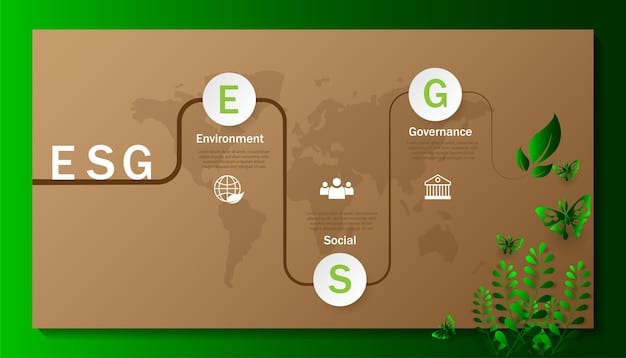
Setting up your compost system involves careful consideration of location and materials. Balancing green and brown materials and keeping the pile moist will support a healthy and productive composting process.
What to Compost and What to Avoid: A Comprehensive Guide
Knowing what to compost and what to avoid is essential for producing high-quality compost and preventing odors and pest problems. Some materials are great for composting, while others can be detrimental to the process.
Composting can be easy when you know the right materials and to avoid.
Compostable Materials
Many household and yard wastes are excellent for composting. These materials break down easily and provide essential nutrients to your compost pile.
Examples include vegetable and fruit scraps, coffee grounds, tea bags, and yard waste.
Materials to Avoid
Some materials should never be composted, as they can attract pests, produce odors, or introduce harmful pathogens to your compost pile. These include meat, dairy products, oily foods, and diseased plants.
- Meat and Dairy: Can attract pests and create unpleasant odors.
- Oily Foods: Slow down decomposition and can attract pests.
- Diseased Plants: Can spread diseases to your garden.
Special Considerations
Certain materials require special handling before being added to the compost pile. For example, large branches should be shredded, and glossy paper should be avoided or used sparingly.
- Shredding large branches helps them break down faster.
- Avoid glossy paper, as it may contain harmful chemicals.
- Cut eggs carton into smaller pieces
By knowing what to compost and what to avoid, you can create a healthy and productive compost pile that yields nutrient-rich compost for your garden.
Maintaining Your Compost Pile: Turning, Watering, and Troubleshooting
Maintaining your compost pile is crucial for ensuring efficient decomposition and producing high-quality compost. Regular turning, proper watering, and addressing common problems are essential tasks.
Let’s explore how to keep your compost pile thriving and trouble-free.
Turning Your Compost
Turning your compost pile regularly aerates the materials, providing oxygen to the microorganisms that break down organic matter. This speeds up the decomposition process and prevents anaerobic conditions that can lead to odors.
Turning helps the pile get needed oxygen.
Watering Your Compost
Maintaining the right moisture level is essential for composting. The compost pile should be moist but not soggy. Check the moisture level by squeezing a handful of compost; it should feel like a wrung-out sponge.
- Too dry: Add water to moisten the materials.
- Too wet: Add dry materials, such as leaves or shredded paper.
Troubleshooting Common Problems
Despite your best efforts, you may encounter some common problems with your compost pile. Knowing how to address these issues can help you keep your compost process on track.
- Odor: Indicates a lack of aeration or too much green material. Turn the pile and adjust the green-to-brown ratio.
- Slow Decomposition: May be due to a lack of moisture or nitrogen. Add water and green materials.
- Pests: Attracted to improperly composted food scraps. Avoid composting meat and dairy products.
By regularly maintaining your compost pile, you can ensure efficient decomposition, prevent problems, and produce high-quality compost for your garden.
Harvesting and Using Your Compost: From Pile to Garden
The ultimate goal of composting is to produce nutrient-rich compost for your garden. Knowing when and how to harvest your compost, as well as how to use it effectively, is crucial for reaping the full benefits.
Using your compost is the best reward.
Knowing When Your Compost Is Ready
Compost is ready to harvest when it is dark brown, crumbly, and has an earthy smell. It should not contain any recognizable pieces of the original materials.
Harvesting Your Compost
There are several ways to harvest your compost, depending on your composting method. For compost bins and tumblers, simply remove the finished compost from the bottom or side. For open piles, you may need to screen the compost to remove any large, undecomposed materials.
- Use a compost screen or sieve to remove large pieces.
- Harvest compost on a dry day to prevent clumping.
Using Your Compost in the Garden
Compost can be used in a variety of ways to improve soil health and promote plant growth. It can be added to garden beds, mixed into potting soil, or used as a top dressing for lawns.
- Mix compost into garden beds before planting.
- Use compost as a top dressing to fertilize plants.
- Make compost tea by steeping compost in water and using the liquid to water plants.
Harvesting and using your compost is a rewarding experience that completes the composting cycle. By incorporating compost into your garden, you can improve soil health, reduce the need for synthetic fertilizers, and promote healthy plant growth.
| Key Point | Brief Description |
|---|---|
| 🌱 Materials | Balance “green” (nitrogen-rich) and “brown” (carbon-rich) materials for efficient decomposition. |
| 💧 Moisture | Keep the compost pile moist, like a wrung-out sponge, to support microbial activity. |
| 🔄 Turning | Regularly turn the compost pile to aerate it, speeding up decomposition and preventing odors. |
| 🚫 Avoid | Avoid composting meat, dairy, and oily foods to prevent pests and odors in your compost pile. |
FAQ
▼
The best materials include vegetable scraps, fruit peels, coffee grounds, tea bags, dry leaves, straw, and shredded paper. Balancing these “green” and “brown” materials ensures healthy compost.
▼
Turning your compost pile every one to two weeks is ideal. This aeration speeds up decomposition and prevents unpleasant odors. Regular turning promotes a healthy composting process.
▼
A bad smell usually indicates a lack of aeration or too much green material. Turn the pile to introduce oxygen and add more brown materials like dry leaves or shredded paper to balance the mixture.
▼
It typically takes between three to six months to get finished compost, depending on the composting method, the materials used, and how well the pile is maintained. Regular turning and proper moisture levels can speed up the process.
▼
Yes, you can compost in an apartment using a vermicomposting system (worm composting) or a small indoor compost bin. These methods are designed to be odorless and space-efficient, making them suitable for apartment living.
Conclusion
Composting in your backyard is a sustainable and rewarding practice that not only reduces waste but also provides valuable nutrients for your garden. By following this beginner’s guide, you can easily reduce waste by 30% and enjoy the many benefits of composting.
